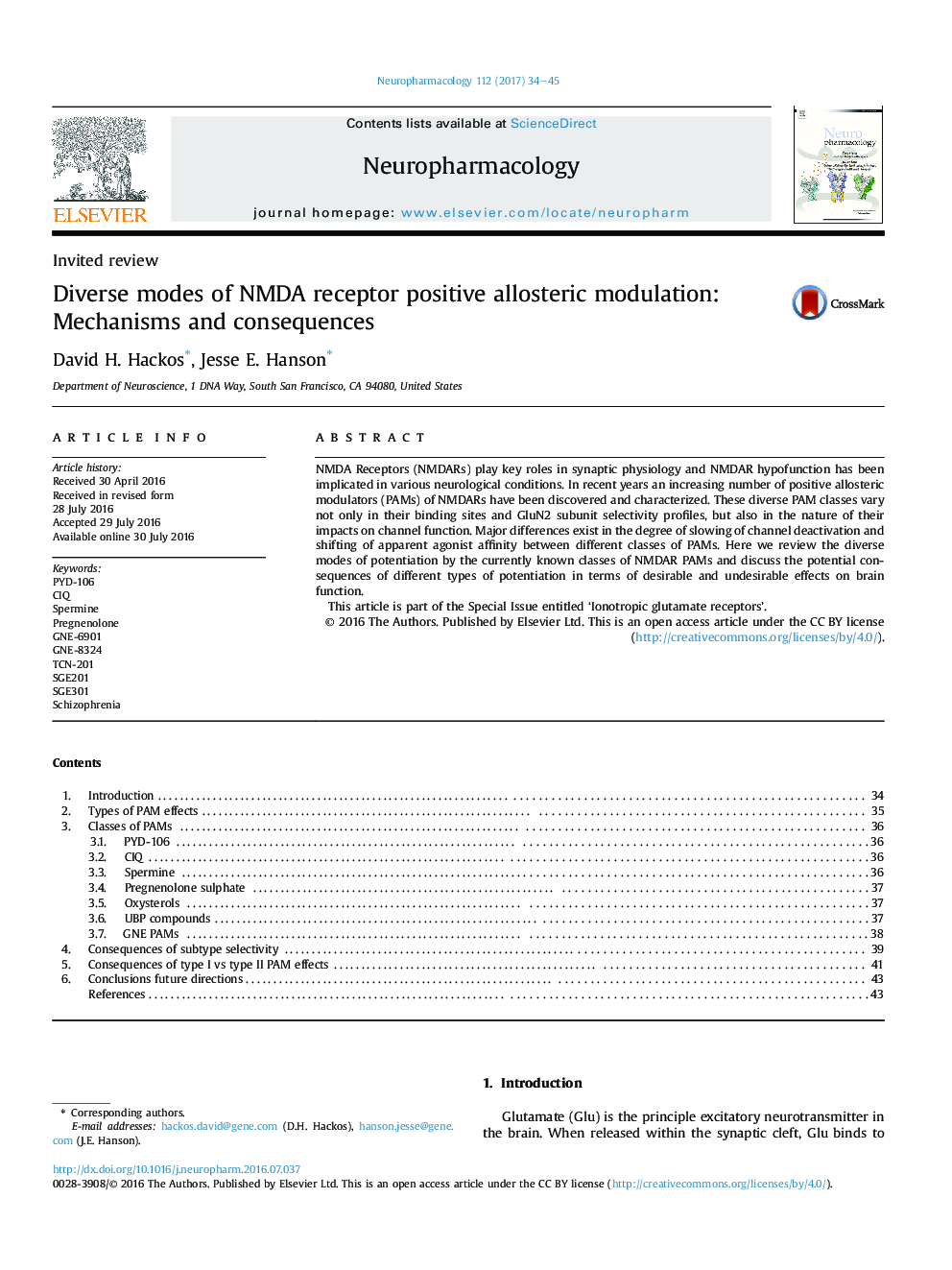| Article ID | Journal | Published Year | Pages | File Type |
|---|---|---|---|---|
| 5549099 | Neuropharmacology | 2017 | 12 Pages |
â¢NMDAR PAMs work by either increasing maximal current (type I effect) or decreasing agonist EC50 (type II effect), or both.â¢Several chemically distinct classes of NMDAR PAMs with distinct binding sites and modes of action are described.â¢Potential consequences of different types of PAM effects on brain function (desirable and undesirable) are considered.
NMDA Receptors (NMDARs) play key roles in synaptic physiology and NMDAR hypofunction has been implicated in various neurological conditions. In recent years an increasing number of positive allosteric modulators (PAMs) of NMDARs have been discovered and characterized. These diverse PAM classes vary not only in their binding sites and GluN2 subunit selectivity profiles, but also in the nature of their impacts on channel function. Major differences exist in the degree of slowing of channel deactivation and shifting of apparent agonist affinity between different classes of PAMs. Here we review the diverse modes of potentiation by the currently known classes of NMDAR PAMs and discuss the potential consequences of different types of potentiation in terms of desirable and undesirable effects on brain function.This article is part of the Special Issue entitled 'Ionotropic glutamate receptors'.
